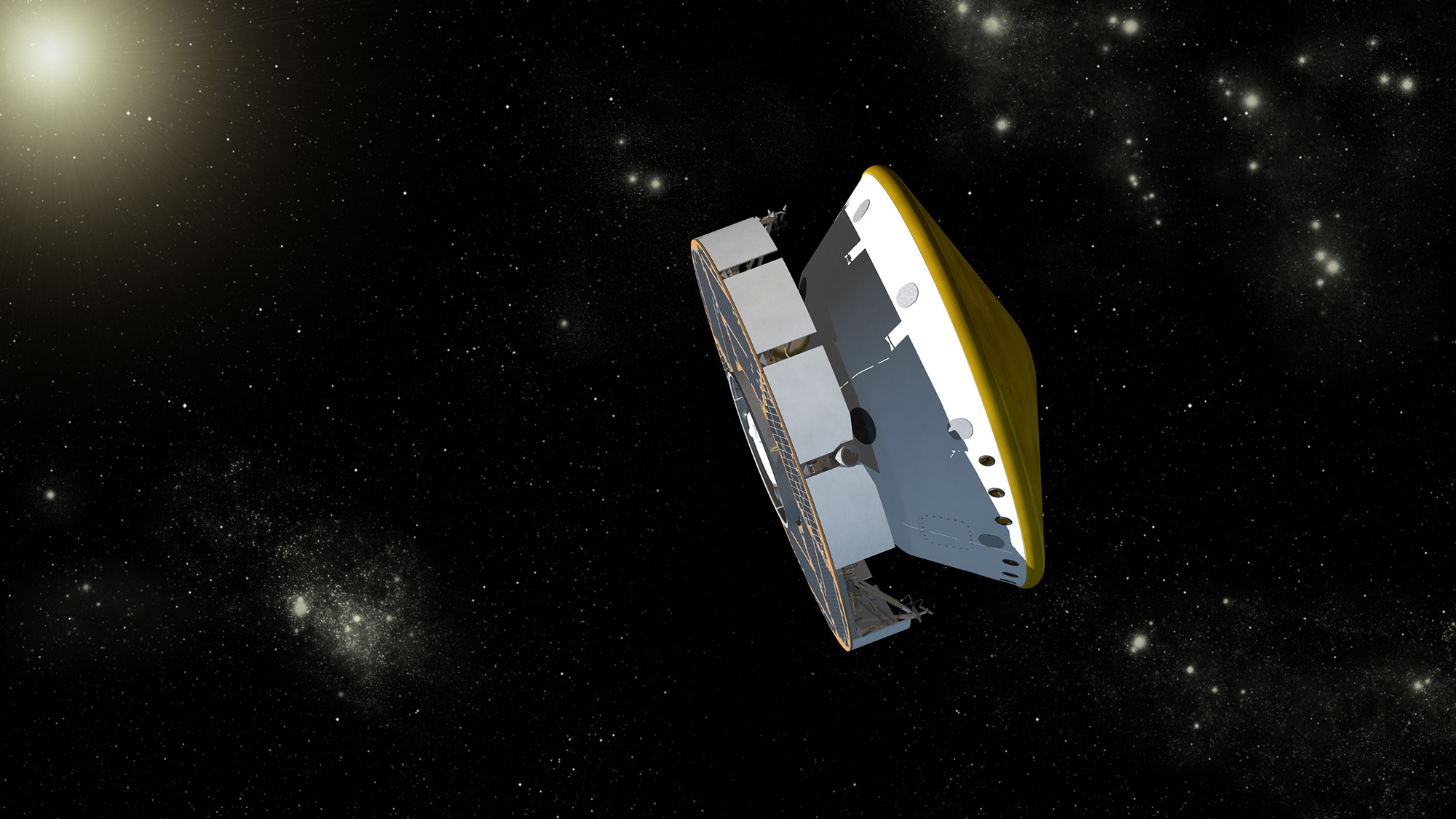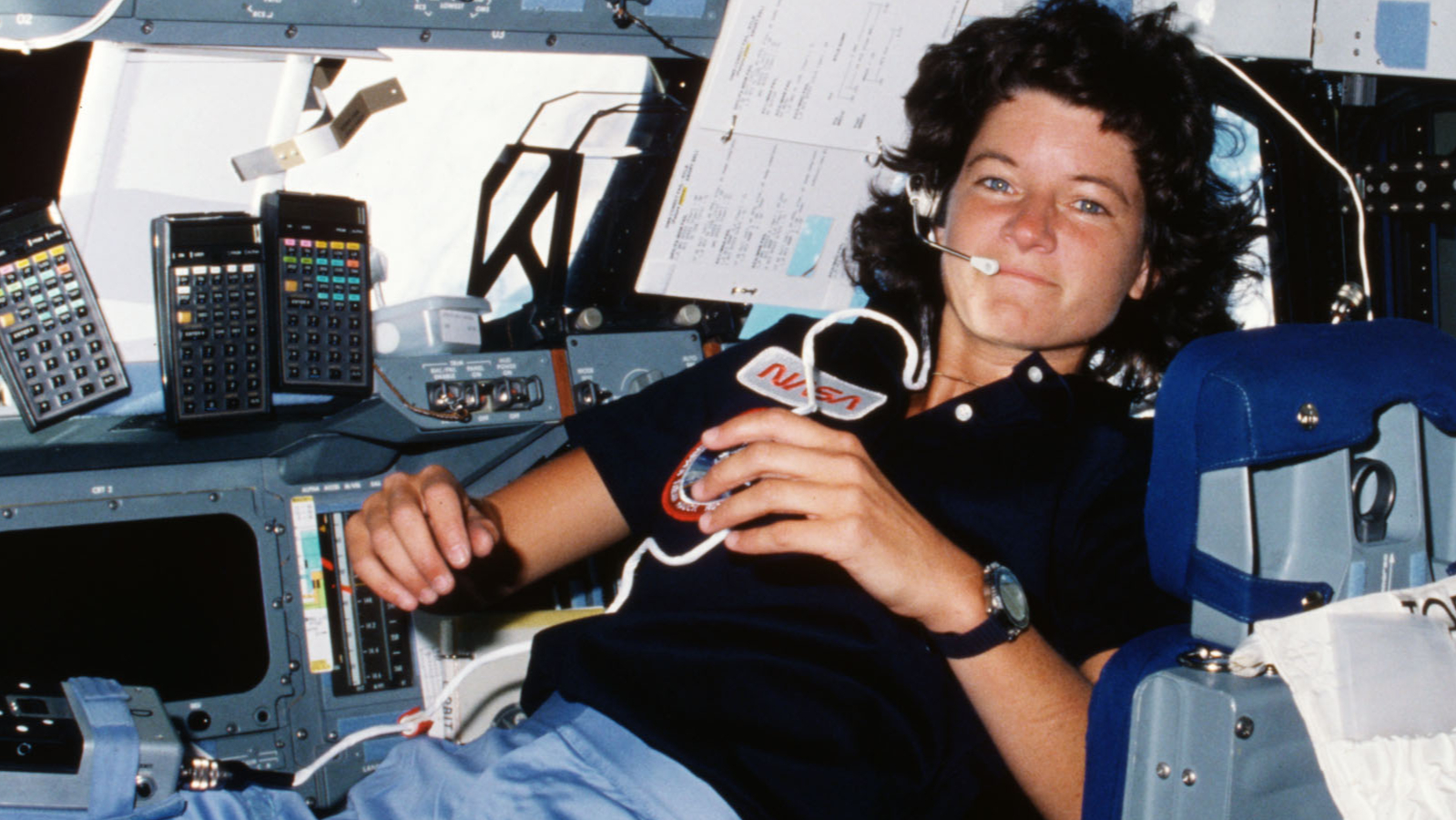
NASA's Perseverance Mars rover just fired up its deep-space thrusters for the first time.
Perseverance, the centerpiece of NASA's $2.7 billion Mars 2020 mission, refined its course toward the Red Planet with a trajectory-correction maneuver on Friday (Aug. 14), 15 days after the life-hunting rover lifted off.
The maneuver, which employed eight thrusters on Perseverance's cruise stage — the vehicle that carries the rover through deep space — was a success, mission team members announced via Twitter on Friday.
Related: The Mars Perseverance rover mission in photos
My first planned Trajectory Correction Maneuver was a success. I do TCMs on my journey to stay on target for a Feb. 18, 2021 date with Mars. I left Earth over 2 weeks ago and already put on 27+ million miles. Only ~265 million more to go! #CountdownToMars https://t.co/1PJU9YwxvJ pic.twitter.com/wdvVPHqPvJAugust 15, 2020
Perseverance's mission plan calls for five trajectory-correction maneuvers to set the rover up for its pinpoint landing inside Mars' Jezero Crater on Feb. 18, 2021. The four remaining engine burns are scheduled to take place on Sept. 28, Dec. 20, Feb. 10 and Feb. 16. (There's also a backup opportunity on Feb. 17 if needed, and a final "contingency" window on Feb. 18, just nine hours before touchdown.)
Perseverance launched July 30 on a mission to seek out signs of ancient Mars life inside the 28-mile-wide (45 kilometers) Jezero Crater, which hosted a lake and river delta in the ancient past. The rover will also collect and cache samples for future return to Earth, potentially as early as 2031.
Mars 2020 will test out new exploration technologies as well. For example, a tiny helicopter named Ingenuity is traveling to the Red Planet on the rover's belly and will attempt the first-ever rotorcraft flight on a world beyond Earth.
Breaking space news, the latest updates on rocket launches, skywatching events and more!
Additionally, one of Perseverance's instruments, called MOXIE (short for "Mars Oxygen ISRU Experiment"), will generate oxygen from the carbon dioxide-dominated Martian atmosphere. A scaled-up version of MOXIE could one day help human pioneers get a foothold on Mars, NASA officials have said. (The agency aims to put boots on the Red Planet in the 2030s.)
Mike Wall is the author of "Out There" (Grand Central Publishing, 2018; illustrated by Karl Tate), a book about the search for alien life. Follow him on Twitter @michaeldwall. Follow us on Twitter @Spacedotcom or Facebook.
Join our Space Forums to keep talking space on the latest missions, night sky and more! And if you have a news tip, correction or comment, let us know at: community@space.com.

Michael Wall is a Senior Space Writer with Space.com and joined the team in 2010. He primarily covers exoplanets, spaceflight and military space, but has been known to dabble in the space art beat. His book about the search for alien life, "Out There," was published on Nov. 13, 2018. Before becoming a science writer, Michael worked as a herpetologist and wildlife biologist. He has a Ph.D. in evolutionary biology from the University of Sydney, Australia, a bachelor's degree from the University of Arizona, and a graduate certificate in science writing from the University of California, Santa Cruz. To find out what his latest project is, you can follow Michael on Twitter.
-
rod Course correction to Mars, I like that :) Last night and early this morning I enjoyed using my 90-mm refractor telescope and viewed Mars at 179x. Very distinct surface features visible now and south polar cap with the planet distinct gibbous shape (not fully illuminated yet). At my location tonight, Mars is up now in Pisces. Weather looks good tonight too so later near 0100 or so, I plan to do some more Mars observing using my telescope, this time 200x views.Reply -
Wolfshadw Replyrod said:Course correction to Mars, I like that :)
I was thinking about this earlier and I guess I assumed that there are some variables that need to be taken into account from time to time over the course of the trip from Earth to Mars. Is this not correct?
-Wolf sends -
Lovethrust Reply
Me too! I used my 100mm reflector at x160 (As high as I can get unfortunately), the polar cap absolutely glowed! I could also make out intermittently details in the southern highlands. Jupited was beautiful as well, I could just make out the GRS. Of course Saturn was gorgeous, couldn’t make out the Cassini division as the atmosphere was boiling here but could make out a cloud smudge.rod said:Course correction to Mars, I like that :) Last night and early this morning I enjoyed using my 90-mm refractor telescope and viewed Mars at 179x. Very distinct surface features visible now and south polar cap with the planet distinct gibbous shape (not fully illuminated yet). At my location tonight, Mars is up now in Pisces. Weather looks good tonight too so later near 0100 or so, I plan to do some more Mars observing using my telescope, this time 200x views.
Overall a great night!!! -
rod Wolf, I am no rocket expert but as I recall, even Apollo missions need some tweaking on their journey to the Moon so space probes to Mars, likely need some course corrections too. Mars and the space probes are moving :)Reply -
rod Wolfshadow said, "I was thinking about this earlier and I guess I assumed that there are some variables that need to be taken into account from time to time over the course of the trip from Earth to Mars. Is this not correct?"Reply
Wolfshadow, I went back and looked at my stargazing log of Mars. Stellarium and Starry Night Pro Plus 8 show the distance between you and Mars when observing, as well as other position information. This is very dynamic, especially as Mars approaches opposition this year in October and goes retrograde on 10-Sep. This morning when I viewed Mars using my telescope, it was about 0.556 AU from Earth. My log shows Mars when I observed on 31-May, was 1.014 AU from Earth. I can only imagine what would happen if I programmed Perseverance journey to Mars and when the probe arrives at Mars, Mars had moved a bit farther, perhaps a few kilometres. Oops :) -
Wolfshadw @rodReply
I get that when trying to land, you don't want to be off by a few kilometers, but if 50 years ago, we could plot a course to rendezvous with all of the outer planets, I would think, 50 years later, that we'd be able to completely and accurately plot a course to intercept with Mars without the need for course corrections.
I mean Voyager getting a gravity boost from Jupiter, on it's way to Saturn. If you're off by even a fraction of a degree, you could miss Saturn altogether, so the math had to be pretty darned accurate and that was 50 years ago!
-Wolf sends -
rod ReplyWolfshadw said:@rod
I get that when trying to land, you don't want to be off by a few kilometers, but if 50 years ago, we could plot a course to rendezvous with all of the outer planets, I would think, 50 years later, that we'd be able to completely and accurately plot a course to intercept with Mars without the need for course corrections.
I mean Voyager getting a gravity boost from Jupiter, on it's way to Saturn. If you're off by even a fraction of a degree, you could miss Saturn altogether, so the math had to be pretty darned accurate and that was 50 years ago!
-Wolf sends
FYI, concerning Voyager I and II missions, you appear to assume that zero course corrections took place during their voyages. Do you have references to support this view? -
rod Wolfshadow et al. The space.com report does state "Four more such maneuvers are scheduled before the rover's February 2021 landing."Reply
There have been numerous missions to Mars by NASA over the years and other groups. Did past missions to Mars also need course corrections? My guess, this is not a first here reporting course corrections used to reach the planet. -
Wolfshadw Replyrod said:FYI, concerning Voyager I and II missions, you appear to assume that zero course corrections took place during their voyages. Do you have references to support this view?
No. I realize that course corrections were necessary. I just mistook your initial comment as sarcasm:
rod said:Course correction to Mars, I like that
My mistake and apologies.
-Wolf sends -
rod ReplyWolfshadw said:No. I realize that course corrections were necessary. I just mistook your initial comment as sarcasm:
My mistake and apologies.
-Wolf sends
Wolf, no apology needed. We are cool :) I enjoy interacting with you, sometimes :)---Rod
